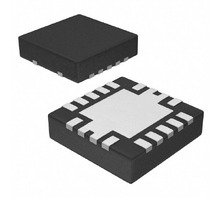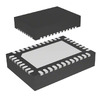Manufacturer Part Number
TPS54821RHLR
Manufacturer
Texas Instruments
Introduction
The TPS54821RHLR is a high-performance, adaptive on-time D-CAP2 mode synchronous buck converter within the SWIFT™ series by Texas Instruments.
Product Features and Performance
Step-Down (Buck) regulator topology
Adjustable output voltage
Single output channel
Supports a 4.5V to 17V input voltage range
Programmable output voltage from 0.6V to 15V
Maximum output current of 8A
Switching frequency range from 200kHz to 1.6MHz
Integrated synchronous rectifier for improved efficiency
Low radiation and EMI characteristics
Product Advantages
Efficient power conversion for reduced energy consumption
High output current capability
Flexible switching frequency for system optimization
Compact QFN package suitable for space-constrained applications
Wide input voltage range accommodates varying power supplies
Key Technical Parameters
Input Voltage (Min): 4.5V
Input Voltage (Max): 17V
Output Voltage (Min/Fixed): 0.6V
Output Voltage (Max): 15V
Output Current: 8A
Switching Frequency: 200kHz ~ 1.6MHz
Synchronous Rectifier: Yes
Operating Temperature Range: -40°C ~ 125°C (TJ)
Quality and Safety Features
Built-in thermal shutdown
Overcurrent protection
Under voltage lockout
Robust thermal performance with exposed pad package
Compatibility
Compatible with a range of input sources and output loads
Flexible for design adaptability in various circuit topologies
Application Areas
Computing systems
Networking and telecommunications
Consumer electronics
Industrial power systems
Gaming consoles
Product Lifecycle
The TPS54821RHLR is currently active.
No public notice of discontinuation, with continuous support available.
Several Key Reasons to Choose This Product
High-efficiency synchronous buck operation reduces heat and increases reliability.
Programmable soft start minimizes inrush current at startup.
Flexible and high-frequency switching options allow optimization of inductor size versus efficiency.
The small package size enables high power density.
Simplifies design with integrated FETs, reducing external component count.
Advanced Power Management (PMIC) tailored for tight space conditions.
Robust operation with built-in safety features ensuring system protection.




 TPS54821RHLTexas Instruments
TPS54821RHLTexas Instruments TPS546D24ARVFRTexas Instruments40A DC/DC CONTROLLER WTIH PMBUS
TPS546D24ARVFRTexas Instruments40A DC/DC CONTROLLER WTIH PMBUS